During the 1920s, Edwin A. Link was employed in his father's organ building and repair business. He obtained his pilot's license in 1927 and became convinced that a mechanical device could be built as an inexpensive method to teach basic piloting. Link received three patents on his flight trainer (No. 1,825,462, March 12, 1930; No. 2,244,464, June 3, 1941; and No. 2,358,016, Sept. 12, 1944).
USA

Binghamton State: NY Zip: 13905 Country: USA Website: https://www.asme.org/about-asme/who-we-are/engineering-history/landmarks/210-link-c-3-flight-trainer Creator: Link, Edwin
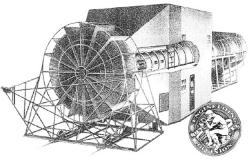
Wind tunnel testing of aircraft models is essential to determine aerodynamic parameters such as lift and drag. The 5-foot Wright Field wind tunnel is an early example of the modern wind tunnel, well known from the early 1920s to the late 1950s for its contributions to research and the development of nearly every major aircraft and associated hardware used by the US Air Force and its predecessor, the Army Air Service.
Smaller and cheaper than a triple-expansion vertical engine, the horizontal cross-compound pumping engine, Pump No. 2, ran at relatively slow revolutions and was considered the height of engineering from the 1890s to World War I. This pumping engine at the York Water Company was built by the Worthington Pump & Machinery Corporation, Snow-Holly Works, Buffalo, New York.
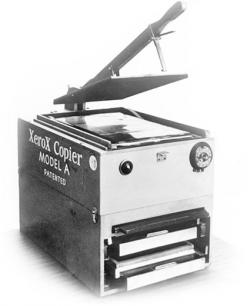
The convenient dry-copying process for printed pages is among the truly revolutionary inventions of the century. In 1937 Chester Carlson, a New York patent attorney, developed the concept of applying an electrostatic charge on a plate coated with a photoconductive material. On November 22, 1938, Carlson dusted powder dyed with evergreen spores across an exposed plate and transferred the imprint to the surface of a paper.
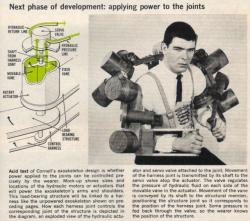
Tracing its history to the earliest days of powered flight – to the Wright brothers and Glenn Curtiss – the site began as the research laboratory of the Curtiss-Wright Aircraft Company. After World War II, it was donated to Cornell University, and in January 1946 opened its doors as the Cornell Aeronautical Laboratory. Nearly every military aircraft and space vehicle developed in the United States from the end of World War II until the present day has been tested at the facility, now known as Calspan.
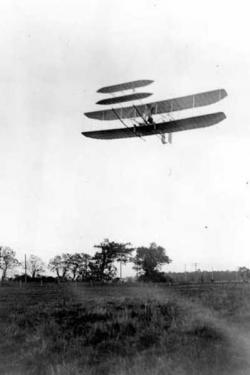
The 1905 Wright Flyer III, built by Wilbur (1867-1912) and Orville (1871-1948) Wright, was the world's first airplane capable of sustained, maneuverable flight. Similar in design to their celebrated first airplane, this machine featured a stronger structure, a larger engine turning new "bent-end" propellers, and greater control-surface area for improved safety and maneuverability.
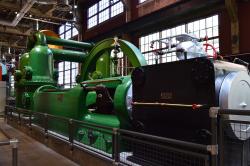
Stationary steam engines, once the prime movers of industry, powered trains, ships, and mills in an age when there was no electric power. By the 19th century, American industry, especially in England, was rapidly outgrowing the capacity of the ater power that had been its principal prime mover. The need for a new power source inspired an intense development of the steam engine, the work of inventors directed mainly at imporving fuel efficiency by reducing steam consumption. The leader in this effort was George H.
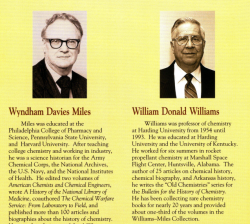
The Williams-Miles History of Chemistry Collection, established in 1992, is one of the leading historical collections of chemistry books in the southern United States. It represents a combined 70 years of scholarly collecting by Wyndham D. Miles, National Institutes of Health, Bethesda, Maryland, and William D. Williams, Professor of Chemistry at Harding University. More than 2,000 volumes published between 1600 and 1900 are preserved here; the collection is particularly strong in 19th-century works.

When opened in 1903, the 1,600 foot long main span of the Williamsburg Bridge was the world's longest suspension span, surpassing the nearby Brooklyn Bridge by only 4.5 feet. The Williamsburg Bridge remained the world's longest suspension bridge span for 21 years until the opening of the Bear Mountain Bridge in 1924. The Williamsburg Bridge has two unsuspended side spans of 596.5 feet, each supported from below by trussed towers, giving the bridge an overall length of 2,793 feet. The four main suspension cables are 18.75 inches in diameter and each composed of over 10,000 wires.
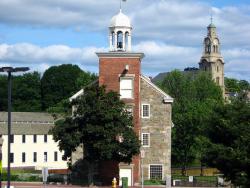
The Wilkinson Mill, situated on the west bank of the Blackstone River in Pawtucket, was built between 1810 and 1811 by machinist Oziel Wilkinson. Constructed in stone rubble, three and one-half stories high, the mill played a critical role in the history of textile technology, in steam power generation, and in the development of the machine tools industry. The Wilkinson family came to Pawtucket in the 1780s and set up a shop to forge anchors, build presses for oil works, and mold iron screws used in paper pressing machinery.
Innovations
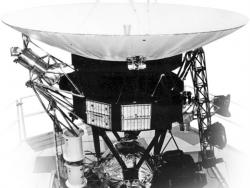
The Voyager explorers, which provided scientists and the world with the first detailed pictures of faraway planets, were designed and tested during 1972 to 1977. The two most intelligent machines ever built in the NASA space program, the explorers were launched from Cape Canaveral, Fla., in 1977…
Read More
The plant began operation only twenty-six days after Thomas Edison's first steam plant began operating on Pearl Street in New York (NL 46). On September 30, 1882, an Edison "K" type dynamo produced electricity from a water-powered turbine to light three buildings (two paper mills and the H.J.…
Read More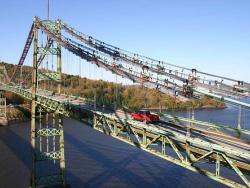
Designed by David B. Steinman, of Robinson & Steinman, New York City, the Waldo-Hancock suspension Bridge is a significant example of Steinman's work. David Steinman is considered among the most important suspension bridge designers of the 20th century. He earned an engineering degree from…
Read More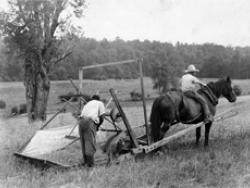
McCormick was born on the 620-acre farm known historically as “Walnut Grove Farm” in 1809. He built the first practical grain reaper, which was successfully demonstrated in a field of oats owned by John Steele in nearby Steeles Tavern in 1831.
Patented in 1834, the reaper is credited…
Read More
The structure has two segments: an East Channel bridge consisting of four 175-foot spans and three 240-foot spans crossing from Harrisburg to City Island; and a West Channel bridge, consisting of seven 175-foot spans crossing from City Island to Wormleysburg.
With 15 truss spans totaling…
Read More
It is a large, imposing structure (over a dozen rooms and spacious halls) dominated by a four-story octagonal tower at one corner and a second shorter square tower at another corner containing tanks for potable and fire-fighting water supply.
The Ward House, named for its builder William…
Read More
Upon its dedication in 1885, the Washington Monument was the tallest structure in the world. Begun in 1848 to honor George Washington, the structure wasn't completed for over 36 years. Construction and financing problems slowed progress and the Civil War halted it completely.
In 1876,…
Read More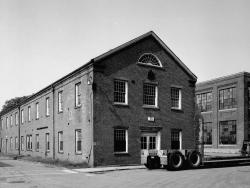
The Watertown Arsenal was the first major engineering testing laboratory in America. It was created to store and manufacture cutting-edge military technology and weaponry. The United States Army Research and Materials Laboratory continued to use the site until 1989, employing soldiers and…
Read More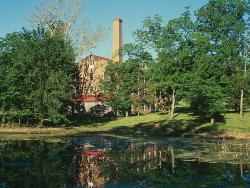
The Watkins Woolen Mill is among the best preserved examples of a Midwest woolen mill in nineteenth-century United States. Its machinery for preparing, spinning, and weaving wool reflects the existence of well-established textile industry in the country. It was designed and built by Waltus L.…
Read More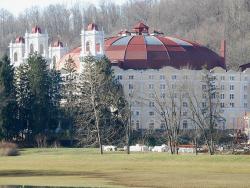
The steel dome stretches 200 feet in diameter and rises 100 feet at its top. To accommodate thermal expansion, the inverted bowl-shaped structure originally rested on rollers that sat on the flat tops of six-story columns
There was a time when Americans from the Eastern seaboard braved…
Read More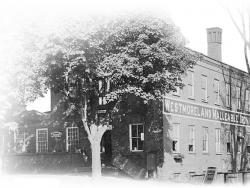
The history of this foundry, which was the oldest malleable iron company in continuous operation in the United States for many years, was inseparable from that of the small town of Westmoreland, where neighbors and workers kept time by the foundry bell. The firm was founded as Oakhill Malleable…
Read More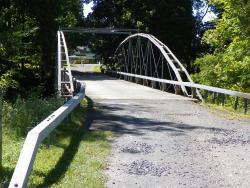
The Whipple Bowstring Truss Bridge was built from a design patented in 1841 by Squire Whipple. Whipple was the first person to understand the stresses in truss members and he developed the first theoretical formula to calculate stresses in the articulated truss. His bowstring truss was the first…
Read More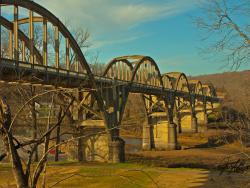
When this 1,850-foot concrete-arch highway bridge was built on the White River in a remote region of northern Arkansas - prior to the construction of upriver, flood-control dams - flash floods occurred frequently, sometimes causing the water to rise as much as one foot per hour. Construction…
Read More
The Wilkinson Mill, situated on the west bank of the Blackstone River in Pawtucket, was built between 1810 and 1811 by machinist Oziel Wilkinson. Constructed in stone rubble, three and one-half stories high, the mill played a critical role in the history of textile technology, in steam power…
Read More
The Wilkinson Mill, situated on the west bank of the Blackstone River in Pawtucket, was built between 1810 and 1811 by machinist Oziel Wilkinson. Constructed in stone rubble, three and one-half stories high, the mill played a critical role in the history of textile technology, in steam power…
Read More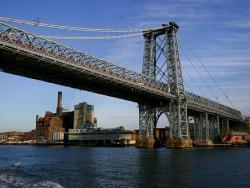
When opened in 1903, the 1,600 foot long main span of the Williamsburg Bridge was the world's longest suspension span, surpassing the nearby Brooklyn Bridge by only 4.5 feet. The Williamsburg Bridge remained the world's longest suspension bridge span for 21 years until the opening of the Bear…
Read More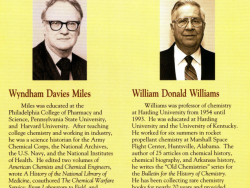
The Williams-Miles History of Chemistry Collection, established in 1992, is one of the leading historical collections of chemistry books in the southern United States. It represents a combined 70 years of scholarly collecting by Wyndham D. Miles, National Institutes of Health, Bethesda, Maryland…
Read More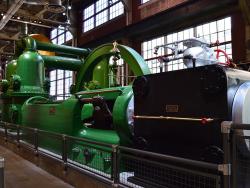
Stationary steam engines, once the prime movers of industry, powered trains, ships, and mills in an age when there was no electric power. By the 19th century, American industry, especially in England, was rapidly outgrowing the capacity of the ater power that had been its principal prime mover.…
Read More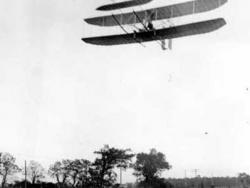
The 1905 Wright Flyer III, built by Wilbur (1867-1912) and Orville (1871-1948) Wright, was the world's first airplane capable of sustained, maneuverable flight. Similar in design to their celebrated first airplane, this machine featured a stronger structure, a larger engine turning new "bent-end…
Read More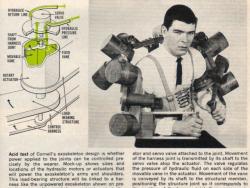
Tracing its history to the earliest days of powered flight – to the Wright brothers and Glenn Curtiss – the site began as the research laboratory of the Curtiss-Wright Aircraft Company. After World War II, it was donated to Cornell University, and in January 1946 opened its doors as the Cornell…
Read More

